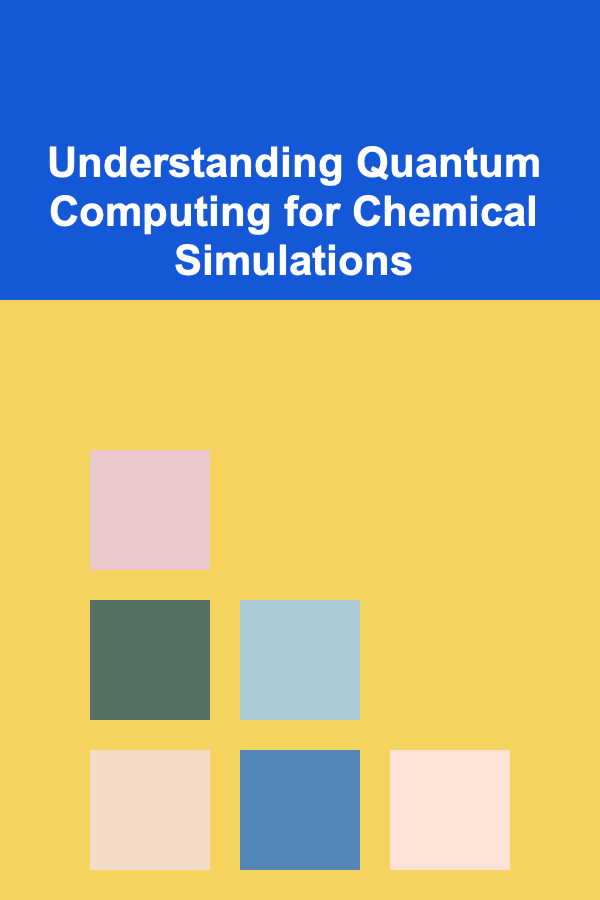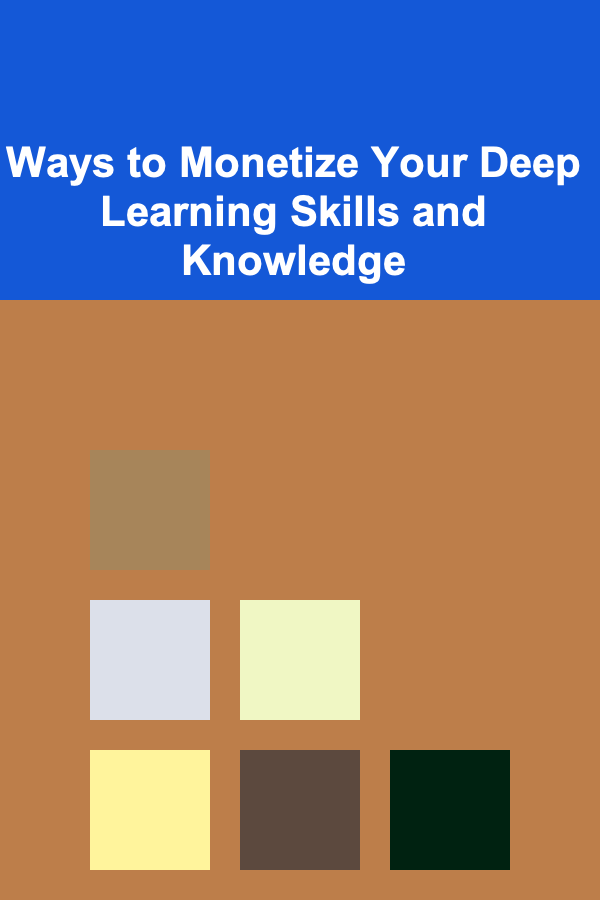
Understanding Quantum Computing for Chemical Simulations
ebook include PDF & Audio bundle (Micro Guide)
$12.99$10.99
Limited Time Offer! Order within the next:

Introduction: The Promise of Quantum Computing in Chemistry
Chemical simulations are crucial for a vast array of applications, ranging from drug discovery and materials science to understanding complex biological processes. Simulating molecular behavior accurately allows scientists to predict reaction rates, design novel compounds with specific properties, and gain insights into the fundamental principles governing chemical systems. However, accurately simulating the behavior of molecules, especially large and complex ones, poses a significant computational challenge for classical computers. This is primarily due to the exponential scaling of the computational resources required to solve the Schrödinger equation, the fundamental equation governing the behavior of electrons in atoms and molecules. As molecular size increases, the number of possible electronic configurations explodes, making accurate classical simulations intractable.
Quantum computing offers a potential solution to this problem. Unlike classical computers that store information as bits representing 0 or 1, quantum computers leverage the principles of quantum mechanics to store and process information using quantum bits, or qubits. Qubits can exist in a superposition of states (both 0 and 1 simultaneously) and can be entangled with other qubits. These unique properties allow quantum computers to perform certain types of calculations much faster than any conceivable classical computer, particularly those relevant to simulating quantum systems like molecules.
This article aims to provide a comprehensive understanding of how quantum computing can be applied to chemical simulations. We will explore the fundamental concepts of quantum computing, the key quantum algorithms used in chemical simulations, the current state of the field, and the challenges that need to be overcome before quantum computers can revolutionize chemistry.
Fundamentals of Quantum Computing
Qubits: The Building Blocks of Quantum Information
The fundamental unit of information in a quantum computer is the qubit. Unlike a classical bit, which can only be either 0 or 1, a qubit can exist in a superposition of both states simultaneously. Mathematically, a qubit's state is represented by a vector in a two-dimensional complex Hilbert space:
|ψ⟩ = α|0⟩ + β|1⟩
where |0⟩ and |1⟩ represent the basis states corresponding to classical 0 and 1, and α and β are complex numbers such that |α|^2^ + |β|^2^ = 1. The coefficients α and β determine the probability amplitude for measuring the qubit in the |0⟩ and |1⟩ states, respectively. Measuring the qubit forces it to collapse into one of the basis states, with probabilities |α|^2^ for |0⟩ and |β|^2^ for |1⟩.
Superposition and Entanglement
Superposition is the ability of a qubit to exist in a combination of states, allowing a quantum computer to explore many possibilities simultaneously. This is in stark contrast to classical computers that can only process one state at a time.
Entanglement is another crucial quantum phenomenon where two or more qubits become correlated in such a way that their fates are intertwined, even when separated by large distances. Measuring the state of one entangled qubit instantaneously influences the state of the other, regardless of the distance between them. Entanglement allows for complex correlations to be encoded and manipulated, enabling powerful quantum algorithms.
Quantum Gates and Quantum Circuits
Quantum gates are the basic building blocks of quantum algorithms, analogous to logic gates in classical computers. They are unitary transformations that operate on qubits, changing their state and manipulating the superposition and entanglement. Common quantum gates include:
- Hadamard gate (H): Creates a superposition from a definite state. When applied to |0⟩, it produces (|0⟩ + |1⟩)/√2.
- Pauli gates (X, Y, Z): Perform rotations around the x, y, and z axes of the Bloch sphere, a geometrical representation of a qubit's state. The X gate acts as a bit flip (0 becomes 1, and 1 becomes 0).
- Controlled-NOT gate (CNOT): A two-qubit gate that flips the target qubit if the control qubit is in the |1⟩ state.
- Phase gate (S, T): Introduce a phase shift to the qubit's state.
A quantum circuit is a sequence of quantum gates applied to a set of qubits. By carefully designing the circuit, one can perform complex computations and extract meaningful information from the qubits.
Quantum Measurement
At the end of a quantum computation, the state of the qubits must be measured to obtain the result. Quantum measurement is a probabilistic process, meaning that the same quantum circuit can produce different outcomes on different runs. The probabilities of obtaining each outcome are determined by the amplitudes of the qubit's state vector. This probabilistic nature necessitates running quantum algorithms multiple times to obtain statistically significant results.
Quantum Algorithms for Chemical Simulations
Several quantum algorithms have been developed that show promise for tackling the challenges of chemical simulations. Here are some of the most prominent:
Variational Quantum Eigensolver (VQE)
VQE is a hybrid quantum-classical algorithm used to find the ground state energy of a molecule. It works by iteratively minimizing the energy of a parameterized quantum circuit (ansatz) using a classical optimization algorithm. The ansatz prepares a trial wave function on the quantum computer, and the energy of this wave function is measured. The classical optimizer then adjusts the parameters of the ansatz to minimize the energy, repeating the process until convergence.
VQE is well-suited for near-term quantum computers because it can be implemented with relatively shallow circuits, reducing the impact of noise and decoherence. However, the choice of the ansatz is crucial for the accuracy of the results. A good ansatz should be able to represent the true ground state wave function with sufficient accuracy, but also be efficiently implementable on a quantum computer.
The basic steps of VQE are:
- Prepare the Hamiltonian: Map the electronic Hamiltonian of the molecule to a qubit Hamiltonian, typically using the Jordan-Wigner or Bravyi-Kitaev transformation.
- Choose an Ansatz: Select a suitable parameterized quantum circuit (ansatz) to represent the trial wave function. Common ansätze include the Unitary Coupled Cluster Singles and Doubles (UCCSD) ansatz or hardware-efficient ansätze.
- Optimize Parameters: Use a classical optimization algorithm to find the parameters that minimize the energy of the trial wave function. The energy is evaluated on the quantum computer by measuring the expectation value of the Hamiltonian.
- Measure Energy: Measure the energy of the system after applying the quantum circuit.
- Iterate: Repeat steps 3 and 4 until the energy converges to a minimum value.
Quantum Phase Estimation (QPE)
QPE is a quantum algorithm used to estimate the eigenvalues of a unitary operator. In the context of chemical simulations, it can be used to determine the energies of the electronic states of a molecule. QPE requires a longer circuit depth than VQE, making it more susceptible to noise and decoherence. Therefore, it is typically considered a more suitable algorithm for fault-tolerant quantum computers.
The key idea behind QPE is to encode the eigenvalue of the unitary operator into the phase of a qubit. By performing a series of controlled operations and an inverse Quantum Fourier Transform (QFT), the phase can be extracted with high precision.
The basic steps of QPE are:
- Prepare the Eigenstate: Prepare an eigenstate |ψ⟩ of the unitary operator U. This is often the most challenging step.
- Apply Controlled-U Operations: Apply a series of controlled-U operations to a set of ancilla qubits, where the control qubits are in a superposition of states.
- Inverse Quantum Fourier Transform (QFT): Apply an inverse QFT to the ancilla qubits.
- Measure the Ancilla Qubits: Measure the ancilla qubits to obtain an estimate of the phase, which is directly related to the eigenvalue.
Quantum Simulation of Molecular Dynamics
Molecular dynamics (MD) simulations are used to study the time evolution of molecular systems. Classical MD simulations can be computationally expensive, especially for large and complex systems. Quantum computing offers the potential to simulate MD more efficiently by directly simulating the time evolution of the wave function.
This involves discretizing time and approximating the time evolution operator using a sequence of quantum gates. Algorithms like the Trotter-Suzuki decomposition can be used to approximate the time evolution operator as a product of simpler unitary operators that can be implemented on a quantum computer.
However, simulating MD with quantum computers remains a challenging task due to the long circuit depths required and the need for accurate approximations of the time evolution operator.
Mapping the Molecular Hamiltonian to Qubits
A crucial step in performing chemical simulations on a quantum computer is mapping the electronic Hamiltonian of the molecule to a qubit Hamiltonian. This involves representing the electronic structure problem in terms of qubits and quantum gates.
Second Quantization
The electronic Hamiltonian is typically expressed in the second quantization formalism, which uses creation and annihilation operators to describe the addition and removal of electrons from molecular orbitals. This formalism is particularly well-suited for quantum simulations because it naturally describes the quantum nature of electrons.
The general form of the electronic Hamiltonian in second quantization is:
H = Σ~pq~ h~pq~ a^†^~p~ a~q~ + 1/2 Σ~pqrs~ v~pqrs~ a^†^~p~ a^†^~q~ a~s~ a~r~
where a^†^~p~ and a~p~ are the creation and annihilation operators for orbital p, h~pq~ are the one-electron integrals, and v~pqrs~ are the two-electron integrals.
Jordan-Wigner Transformation
The Jordan-Wigner transformation is a common method for mapping the creation and annihilation operators to qubit operators. It maps each spin-orbital to a qubit, and the creation and annihilation operators are expressed in terms of Pauli operators (X, Y, Z) acting on the qubits.
The Jordan-Wigner transformation introduces non-local interactions between qubits, which can lead to complex quantum circuits. However, it is relatively straightforward to implement.
Bravyi-Kitaev Transformation
The Bravyi-Kitaev transformation is another method for mapping the creation and annihilation operators to qubit operators. It aims to reduce the non-locality of the qubit interactions compared to the Jordan-Wigner transformation, which can lead to more efficient quantum circuits. However, the Bravyi-Kitaev transformation is more complex to implement.
Choosing the appropriate mapping technique depends on the specific problem and the architecture of the quantum computer. Research is ongoing to develop even more efficient and scalable mapping techniques.
Current Status and Challenges
Near-Term Quantum Devices (NISQ Era)
Currently, quantum computing is in the Noisy Intermediate-Scale Quantum (NISQ) era. NISQ devices have a limited number of qubits (typically tens to hundreds) and are susceptible to noise and decoherence. This limits the complexity of the quantum circuits that can be executed reliably.
Despite these limitations, significant progress has been made in using NISQ devices for chemical simulations. Algorithms like VQE have been successfully used to calculate the ground state energies of small molecules, demonstrating the potential of quantum computing for chemical applications.
Error Mitigation and Fault Tolerance
A major challenge in quantum computing is dealing with errors. Qubits are very sensitive to their environment, and even small disturbances can cause errors in the computation. Error mitigation techniques are used to reduce the impact of noise on the results obtained from NISQ devices. These techniques include:
- Zero-Noise Extrapolation: Extrapolates the results obtained at different noise levels to the zero-noise limit.
- Probabilistic Error Cancellation: Uses a probabilistic model of the noise to cancel out errors.
- Symmetry Verification: Verifies that the results obtained satisfy known symmetries of the problem.
Ultimately, fault-tolerant quantum computing is required to perform complex and reliable chemical simulations. Fault-tolerant quantum computers use quantum error correction codes to protect the qubits from noise. However, building fault-tolerant quantum computers is a major technological challenge that will likely require significant advances in hardware and software.
Hardware Development
Various hardware platforms are being developed for quantum computing, including:
- Superconducting Qubits: Based on superconducting circuits that exhibit quantum behavior. Superconducting qubits are currently the most advanced platform in terms of qubit count and coherence times.
- Trapped Ions: Use individual ions trapped in electromagnetic fields as qubits. Trapped ions offer high fidelity and long coherence times but are more difficult to scale up.
- Photonic Qubits: Use photons as qubits. Photonic qubits offer good coherence times and are well-suited for quantum communication.
- Neutral Atoms: Use neutral atoms trapped in optical lattices as qubits. Neutral atoms offer good scalability and coherence times.
Each hardware platform has its own advantages and disadvantages. The choice of the optimal platform for chemical simulations will depend on the specific problem and the state of the technology.
Software and Algorithm Development
Significant effort is being devoted to developing software tools and algorithms for quantum computing. This includes:
- Quantum Programming Languages: Languages like Qiskit, Cirq, and PennyLane are used to program quantum computers.
- Quantum Simulators: Classical computers are used to simulate the behavior of quantum computers, allowing researchers to develop and test quantum algorithms.
- Algorithm Optimization: Developing more efficient quantum algorithms for chemical simulations is an active area of research.
The development of robust and user-friendly software tools is crucial for enabling a wider range of researchers to utilize quantum computing for chemical simulations.
The Need for Interdisciplinary Collaboration
Advancing the field of quantum computing for chemical simulations requires close collaboration between experts in various fields, including:
- Quantum Computing Scientists: Develop and implement quantum algorithms.
- Chemists: Provide the chemical knowledge and define the problems to be solved.
- Computer Scientists: Develop software tools and optimize algorithms for quantum computers.
- Physicists: Develop and improve the hardware platforms for quantum computing.
By bringing together experts from different disciplines, we can accelerate the development of quantum computing for chemical simulations and unlock its full potential.
Future Directions and Potential Impact
The field of quantum computing for chemical simulations is rapidly evolving, and the future holds tremendous promise. As quantum computers become more powerful and fault-tolerant, they will be able to tackle increasingly complex chemical problems that are currently intractable for classical computers.
Drug Discovery and Design
Quantum computing has the potential to revolutionize drug discovery by enabling the accurate simulation of protein-ligand interactions. This could lead to the design of more effective drugs with fewer side effects. Quantum simulations could also be used to identify novel drug targets and to optimize the properties of drug candidates.
Materials Science
Quantum computing can be used to design novel materials with specific properties, such as high-temperature superconductors, lightweight and strong materials, and efficient energy storage materials. By simulating the electronic structure and properties of materials, we can identify promising candidates for new technologies.
Catalysis
Catalysis plays a crucial role in many chemical processes, and quantum computing can be used to design more efficient and selective catalysts. By simulating the mechanisms of catalytic reactions, we can identify the key factors that govern catalytic activity and design catalysts with improved performance.
Understanding Fundamental Chemical Processes
Quantum computing can provide insights into fundamental chemical processes, such as electron transfer, chemical bonding, and reaction dynamics. By simulating these processes with high accuracy, we can gain a deeper understanding of the underlying principles that govern chemical behavior.
Challenges and Opportunities
Despite the tremendous potential, several challenges remain before quantum computing can fully realize its impact on chemical simulations. These challenges include:
- Scaling up the number of qubits: Quantum computers need to have significantly more qubits to simulate complex molecules and materials.
- Improving qubit coherence times: Qubits need to maintain their quantum state for longer periods of time to allow for more complex computations.
- Developing more efficient quantum algorithms: New and improved quantum algorithms are needed to tackle specific chemical problems.
- Developing robust error correction techniques: Quantum error correction is essential for performing reliable computations on noisy quantum computers.
Addressing these challenges will require continued research and development in both hardware and software. However, the potential rewards are enormous, and quantum computing promises to transform the field of chemical simulations in the coming years.
Conclusion
Quantum computing holds the potential to revolutionize chemical simulations by providing a fundamentally different approach to solving the Schrödinger equation. While still in its early stages, the field has made significant progress, and quantum algorithms like VQE and QPE have shown promising results for calculating the electronic structure of molecules. Overcoming the challenges of building larger, more reliable quantum computers and developing efficient algorithms will pave the way for transformative advancements in drug discovery, materials science, catalysis, and our fundamental understanding of chemical processes. The future of chemical simulations is undoubtedly intertwined with the continued development and application of quantum computing technologies.

How to Choose the Right Business Structure for Your Dropshipping Store
Read More
How to Create a New Year's Eve Celebration at Home
Read More
How to Sell Handmade Crochet Accessories on Etsy: A Comprehensive Guide
Read More
Ways to Monetize Your Deep Learning Skills and Knowledge
Read More
How to Pray Through Anxiety: A Prayer Planner Guide
Read More
10 Tips for Accessible Venue Selection
Read MoreOther Products

How to Choose the Right Business Structure for Your Dropshipping Store
Read More
How to Create a New Year's Eve Celebration at Home
Read More
How to Sell Handmade Crochet Accessories on Etsy: A Comprehensive Guide
Read More
Ways to Monetize Your Deep Learning Skills and Knowledge
Read More
How to Pray Through Anxiety: A Prayer Planner Guide
Read More